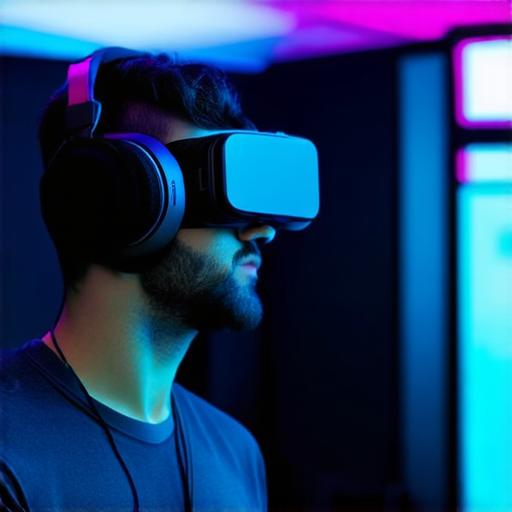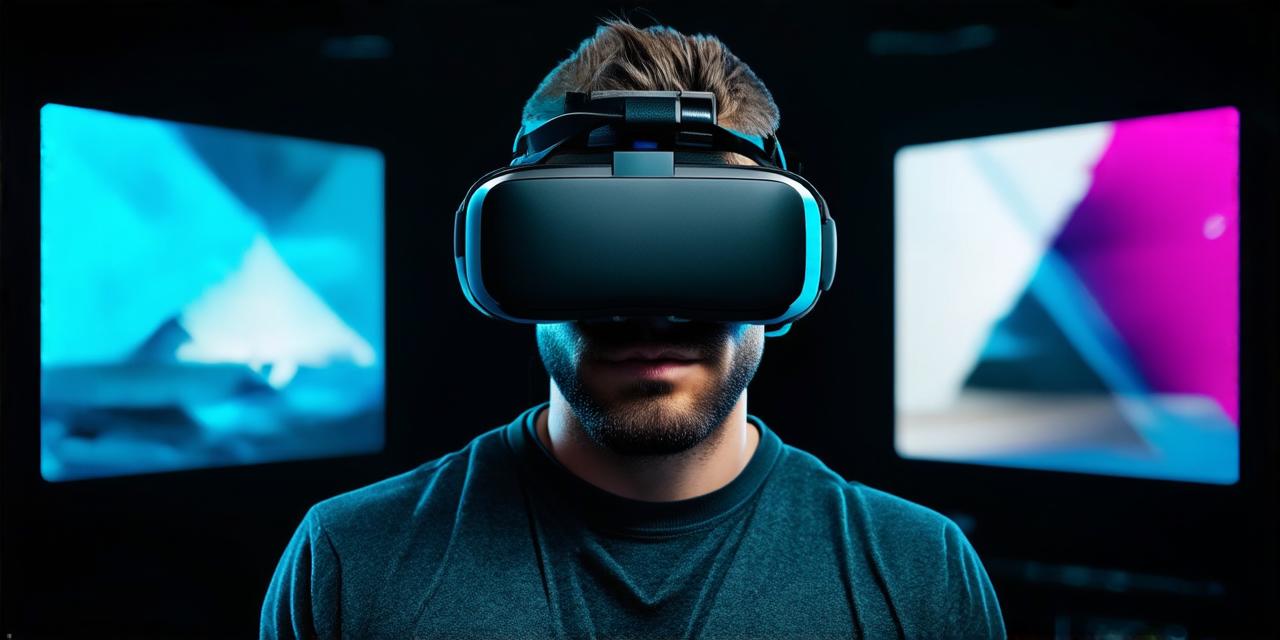The Science Behind Seizures and Virtual Reality
Seizures are sudden, electrical disturbances in the brain that can cause a range of symptoms, including loss of consciousness, muscle spasms, and altered senses. While the exact causes of seizures are not fully understood, they are believed to be related to abnormalities in the brain’s electrical activity.
Virtual reality gaming involves immersing oneself in a simulated environment that can trigger a range of physiological responses, including changes in heart rate, blood pressure, and body temperature. These responses can potentially trigger seizures in some individuals, especially those who are prone to them.

Studies have shown that virtual reality gaming can increase the risk of seizures in individuals with epilepsy or a history of seizures. This is because VR can trigger the same neural pathways in the brain as real-life experiences, which can potentially cause seizures in susceptible individuals.
Case Studies and Personal Experiences
There have been several documented cases of seizures being triggered by virtual reality gaming. One such case involved a 17-year-old boy who experienced a grand mal seizure while playing a VR game. The boy had a history of epilepsy, but he did not experience any seizures while using other forms of entertainment.
Another case involved a man who experienced a seizure while playing a VR game that involved driving a car. The man had no history of seizures and was not aware that he was at risk of experiencing one while playing the game.
Personal experiences can also provide insight into the potential risks associated with virtual reality gaming. One developer reported experiencing dizziness and nausea while using VR headsets, which can be symptoms of motion sickness and potentially trigger seizures in susceptible individuals.
The Impact on Virtual Reality Developers
Virtual reality developers have a responsibility to consider the potential risks associated with their technology and take steps to mitigate those risks. This includes providing clear warnings about the potential risks associated with virtual reality gaming, especially for individuals with epilepsy or a history of seizures.
Developers can also incorporate features into their games that reduce the risk of seizures, such as adjustable brightness and contrast levels, and the ability to pause or stop the game at any time. Additionally, developers can work closely with medical professionals to better understand the potential risks associated with virtual reality gaming and develop guidelines for safe use.
Research and Experiments on Seizure Risk from Virtual Reality Gaming
Several studies have been conducted to explore the potential seizure risk from virtual reality gaming. One such study found that playing VR games can increase the risk of seizures in individuals with epilepsy or a history of seizures. The study also found that the risk is highest for games that involve driving, flying, or other activities that require high levels of attention and concentration.
Another study found that exposure to flickering lights in virtual reality environments can trigger seizures in susceptible individuals. This highlights the importance of providing clear warnings about potential risks and incorporating features into games that reduce the risk of seizures.
Expert Opinions on Seizure Risk from Virtual Reality Gaming
Experts in the field have provided guidance for virtual reality developers to consider when it comes to seizure risk. One expert recommended providing clear warnings about potential risks and incorporating features into games that reduce the risk of seizures, such as adjustable brightness and contrast levels.
Another expert emphasized the importance of understanding the potential risks associated with virtual reality gaming and developing guidelines for safe use. This includes working closely with medical professionals to better understand the potential risks and providing resources for individuals with epilepsy or a history of seizures.
Real-Life Examples of Seizure Risk from Virtual Reality Gaming
Several real-life examples illustrate the potential risks associated with virtual reality gaming. One such example involves a man who experienced a seizure while playing a VR game that involved driving a car. The man had no history of seizures and was not aware that he was at risk of experiencing one while playing the game.
Another real-life example involves a woman who experienced motion sickness while using a VR headset. The woman had to stop using the headset after just a few minutes due to her symptoms, which can be indicative of potential seizure risks in susceptible individuals.
Thought-Provoking Ending
Virtual reality technology has opened up new possibilities for immersive experiences that can be both entertaining and educational. However, as with any new technology, there are potential risks associated with its use, especially when it comes to virtual reality gaming. Virtual reality developers have a responsibility to consider the potential risks associated with their technology and take steps to mitigate those risks. By providing clear warnings about potential risks and incorporating features into games that reduce the risk of seizures, developers can help ensure that VR gaming is safe and enjoyable for all users.
